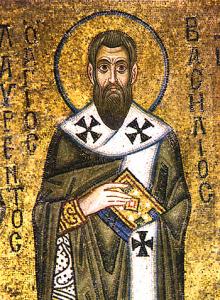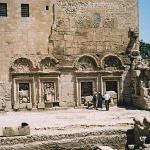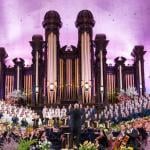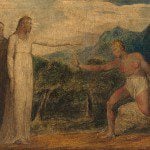
What had they received but the Holy Spirit who is given to those who believe and are being born again ‘through the laver of regeneration’ [Titus 3:5: “the washing of regeneration” (RSV)]? (First Letter to Serapion, 4; see p. 70)
. . . the divine grace which had been given to him in baptism . . . (Apologia ad Constantium, 7)
For as we are all from earth and die in Adam, so being regenerated from above of water and Spirit, in the Christ we are all quickened; the flesh being no longer earthly, but being henceforth made Word, by reason of God’s Word who for our sake ‘became flesh.’ (Discourse 3 Against the Arians, 33)
***
“Please Hit ‘Subscribe’”! If you have received benefit from this or any of my other 4,800+ articles, please follow this blog by signing up (with your email address) on the sidebar to the right (you may have to scroll down a bit), above where there is an icon bar, “Sign Me Up!”: to receive notice when I post a new blog article. This is the equivalent of subscribing to a YouTube channel. Please also consider following me on Twitter / X and purchasing one or more of my 55 books. All of this helps me get more exposure, and (however little!) more income for my full-time apologetics work. Thanks so much and happy reading!
***
Basil the Great (330-379)
Our Lord, when enjoining the baptism of salvation, charged His disciples to baptize all nations in the name of the Father and of the Son and of the Holy Ghost,
[Matthew 28:19] . . . (The Holy Spirit, ch. 10, 24)
And in what way are we saved? Plainly because we were regenerate through the grace given in our baptism. How else could we be? . . . my baptism was the beginning of life, and that day of regeneration . . . Faith and baptism are two kindred and inseparable ways of salvation: faith is perfected through baptism, baptism is established through faith, and both are completed by the same names. For as we believe in the Father and the Son and the Holy Ghost, so are we also baptized in the name of the Father and of the Son and of the Holy Ghost; first comes the confession, introducing us to salvation, and baptism follows, setting the seal upon our assent. (The Holy Spirit, ch. 10, 26; ch. 12, 28)
The history of the exodus of Israel is recorded to shew forth those who are being saved through baptism. . . . From the sea the people came out unharmed: we too, as it were, alive from the dead, step up from the water “saved” by the “grace” of Him who called us. (The Holy Spirit, ch. 14, 31)
Paul, the imitator of Christ, says, being made conformable unto his death; if by any means I might attain unto the resurrection of the dead.
[Philippians 3:10-11] How then are we made in the likeness of His death? [Romans 6:4-5] In that we were buried with Him by baptism. What then is the manner of the burial? And what is the advantage resulting from the imitation? First of all, it is necessary that the continuity of the old life be cut. And this is impossible less a man be born again, according to the Lord’s word; [John 3:3] for the regeneration, as indeed the name shows, is a beginning of a second life. So before beginning the second, it is necessary to put an end to the first. For just as in the case of runners who turn and take the second course, a kind of halt and pause intervenes between the movements in the opposite direction, so also in making a change in lives it seemed necessary for death to come as mediator between the two, ending all that goes before, and beginning all that comes after. How then do we achieve the descent into hell? By imitating, through baptism, the burial of Christ. For the bodies of the baptized are, as it were, buried in the water. Baptism then symbolically signifies the putting off of the works of the flesh; as the apostle says, you were circumcised with the circumcision made without hands, in putting off the body of the sins of the flesh by the circumcision of Christ; buried with him in baptism.
[Colossians 2:11-12] And there is, as it were, a cleansing of the soul from the filth that has grown on it from the carnal mind, as it is written, You shall wash me, and I shall be whiter than snow.
On this account we do not, as is the fashion of the Jews, wash ourselves at each defilement, but own the baptism of salvation to be one. For there the death on behalf of the world is one, and one the resurrection of the dead, whereof baptism is a type. For this cause the Lord, who is the Dispenser of our life, gave us the covenant of baptism, containing a type of life and death, for the water fulfils the image of death, and the Spirit gives us the earnest of life. Hence it follows that the answer to our question why the water was associated with the Spirit is clear: the reason is because in baptism two ends were proposed; on the one hand, the destroying of the body of sin, that it may never bear fruit unto death; on the other hand, our living unto the Spirit, and having our fruit in holiness; the water receiving the body as in a tomb figures death, while the Spirit pours in the quickening power, renewing our souls from the deadness of sin unto their original life. This then is what it is to be born again of water and of the Spirit, the being made dead being effected in the water, while our life is wrought in us through the Spirit. (The Holy Spirit, ch. 15, 35)
Man is created through baptism, for if any man be in Christ he is a new creature.
[2 Corinthians 5:17] (Letter 8: To the Cæsareans. A defense of his withdrawal, and concerning the faith, 11)
. . . the tradition of the baptism of salvation. (Letter 105: To the deaconesses, the daughters of Count Terentius)
. . . purified by the Church’s true baptism. (Letter 188: To Amphilochius, concerning the Canons, 1)
*
Practical Matters: Perhaps some of my 4,800+ free online articles (the most comprehensive “one-stop” Catholic apologetics site) or fifty-five books have helped you (by God’s grace) to decide to become Catholic or to return to the Church, or better understand some doctrines and why we believe them.
Or you may believe my work is worthy to support for the purpose of apologetics and evangelism in general. If so, please seriously consider a much-needed financial contribution. I’m always in need of more funds: especially monthly support. “The laborer is worthy of his wages” (1 Tim 5:18, NKJV). 1 December 2021 was my 20th anniversary as a full-time Catholic apologist, and February 2022 marked the 25th anniversary of my blog.
PayPal donations are the easiest: just send to my email address: [email protected]. Here’s also a second page to get to PayPal. You’ll see the term “Catholic Used Book Service”, which is my old side-business. To learn about the different methods of contributing (including Zelle), see my page: About Catholic Apologist Dave Armstrong / Donation Information. Thanks a million from the bottom of my heart!
*
***
*
Photo credit: St. Basil the Great. Mosaic, Kiev Hagia Sophia, 11th century [source] [public domain / Wikimedia Commons]
Summary: I document the views of Athanasius (c. 297-373) & Basil the Great (330-379) on baptism (particularly baptismal regeneration): all consistent with Catholic teaching.













